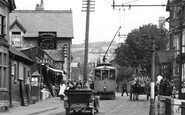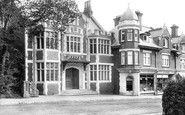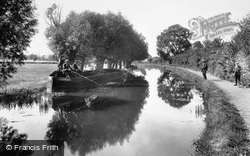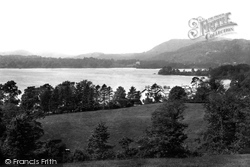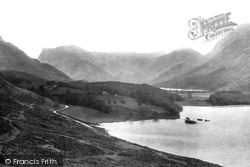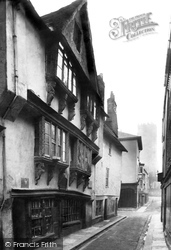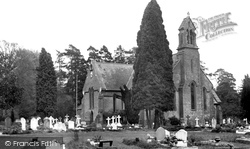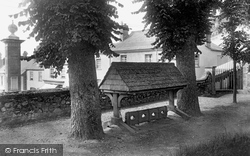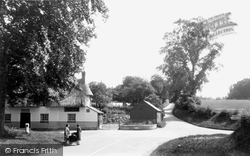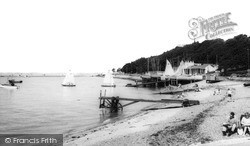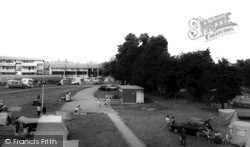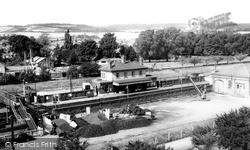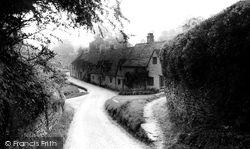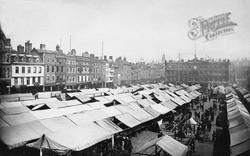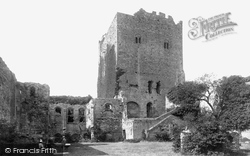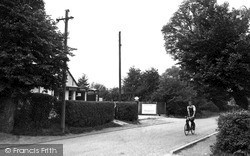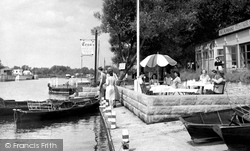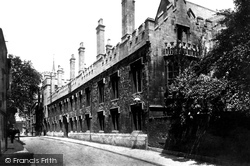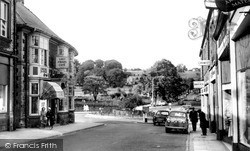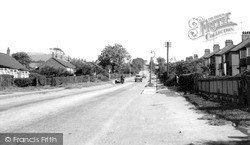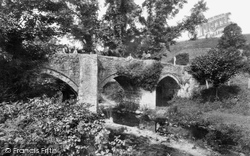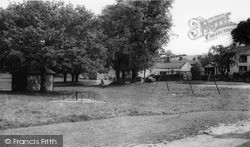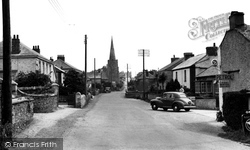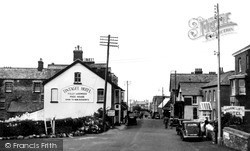Places
18 places found.
Those places high-lighted have photos. All locations may have maps, books and memories.
- Hythe, Kent
- Hythe, Hampshire
- Small Hythe, Kent
- Bablock Hythe, Oxfordshire
- Methwold Hythe, Norfolk
- Hythe, Somerset
- Hythe, Surrey
- Hythe End, Berkshire
- The Hythe, Essex
- Egham Hythe, Surrey
- West Hythe, Kent
- New Hythe, Kent
- Broad Street, Kent (near Hythe)
- Horn Street, Kent (near Hythe)
- Newbarn, Kent (near Hythe)
- Newington, Kent (near Hythe)
- Broad Street, Kent (near Hythe)
- Stone Hill, Kent (near Hythe)
Photos
360 photos found. Showing results 1,101 to 360.
Maps
101 maps found.
Books
10 books found. Showing results 1,321 to 10.
Memories
4,406 memories found. Showing results 551 to 560.
The Llandudno & Colwyn Bay Tramway In Old Colwyn
What an interesting photograph of a grey painted tram heading for the 'Queens Hotel' terminus which was just over half of a mile away. It would take just over five minutes and three tramstops to ...Read more
A memory of Old Colwyn in 1920 by
Memories Of The Civic
My first memory of the Civic was that awesome ceiling, seen for the very first time at a do hosted by the then new Evening Post newspaper, for all the delivery boys & girls. Probably not long after the hall opened. The ...Read more
A memory of Dunstable by
Evacuees To Normanton In 1941
My elder brother, Alan Crook, and I were evacuated from Sheffield during the blitz of, I think, 1941. We stayed, as far as I can recall, in a large house, I believe the Manse, attached to ...Read more
A memory of Normanton in 1940 by
A Native Of Tynemouth In Exile
I was born in Tynemouth, in Percy Park, the road leading down to the sea by the Grand Hotel. In 1956, I began at Tynemouth Prep. School, now The Kings School, in Huntington Place. I live in Hampshire now, but, I ...Read more
A memory of Tynemouth in 1955 by
Personal Reflections
I was born in Sandleaze, Worton in 1957. I was brought up at 1 Mill Road near the Marston boundary. I remember many things about the village especially the Rose and Crown Pub and the Mill. I remember with pride the ...Read more
A memory of Worton by
Staverton Elizabethan Fayre
The Staverton Playing Fields were the location for the Elizabethan Fayre on August Bank Holiday Monday. Lots of entertainment was arranged including a jazz band, the Babelfish Ceilidh Band, Dog Racing, Punch and Judy, ...Read more
A memory of Staverton in 2008 by
Parkstone Girls' Grammar School
This was the entrance to Parkstone Girls' Grammar school where I went from 1956, with Miss Allen as headmistress, until we moved to the present site in Sopers Lane in, I think, 1960 or 61, when these buildings were ...Read more
A memory of Poole in 1956 by
Shops
Bryant's Post Office with Mrs Robson, a Queen Motherish figure always dressed in a black two piece, dishing out pensions, stamps and postal orders from the aloof position behind her cage. Duggie Bain's cobblers, the warm oily smell, ...Read more
A memory of Howden-le-Wear by
Too Short A Stay!
I lived in Kirby Hill for one year from 1965 to 66, I was a 13 year old boy. I absolutely loved my time there and have many happy memories. My Mother and Father bought the Shoulder of Mutton in 1965 taking ...Read more
A memory of Kirby Hill in 1965 by
Jacqueline Oldman
While researching my family history I came across this article in the Eastern Counties Advertiser 18th October 1879. It is the coroner's report relating to my great great grandfather's brother Thomas Brassett 1815 - 1879 an ...Read more
A memory of Southminster in 1870 by
Captions
4,899 captions found. Showing results 1,321 to 1,344.
The peace and quiet they are obviously enjoying has gone now: it is shattered by the construction of the M40 motorway close by.
For many years the Lowood was one of several hotels owned by the locally-based speedboat ace Norman Buckley (no relation of the author) and his family.
The twin lakes of Crummuck Water and Buttermere were once one, but were separated by the alluvium left by Sail Beck.
But alas, they are no more to be seen, as the building was destroyed on 1943 by the same bomb that damaged the Parade House.
It cost £3,351 to build, over a quarter of which was raised by local people, the remainder being supplied by the local gentry.
The original wooden stocks are now very fragile, and are protected by the later housing we see here. To the left is the stone monument commemorating Queen Victoria's
The area to the right is the edge of Debden Park - the grounds of Debden Hall that were landscaped in the late 18th century, possibly by the mighty Humphrey Repton.
ready for use.This beach is far less crowded than those shown in the 1950s, the Indian Summer of the British seaside town.The couple in the deckchairs sit just above the high tide mark, shown by the
Camping was a popular, cheap way of spending a family holiday by the sea.
Thereafter Snodland quickly grew from a quiet, almost wholly agricultural village, into a small town, fed by the two main industries: cement and paper-making.
To the left is the back of the Union Club, which at that time was occupied by the Royal Collage of Physicians.
Arlington Row is now owned by the National Trust.
This building was designed in 1724 by the mayor, Marmaduke Pennel, but was largely rebuilt in 1814.
Portchester Castle was built by the Romans to defend the English Channel from raiding Saxons, and is one of the largest of the 'Saxon shore' forts.
By the end of the 1950s, outlying shops were competing with the new Town Centre development. Reckitts Blue—advertised on the fence—was a well-known bleaching agent of the time.
The grid pattern of the streets in the centre of Wells strongly suggests that the town was a planned one, probably by the abbey of Ramsey (in Lincolnshire) which owned it some 700 years ago.
Apart from the delights of the neighbourhood, a programme of entertainment was organised by the staff at the camp.
The college gardens are bordered on two sides by the ancient city wall.
Grey Friars Café (left) was built in 1889 as Cocoa Rooms by the Countess of Zetland, a staunch advocate of temperance.
It now carries considerably more traffic, and speeds are closely monitored by the police; it is dominated by large estates built in the fields visible on the left.
It is high summer, judging by the height of the River Teign and the shirt sleeves of the farm labourers.
The roundabout and swings, provided by the Parochial Foundation Charity, are still there today.
This well was erected opposite the village church by the Rev Samuel Trist, and was later restored to commemorate the Coronation of King George V and Queen Mary in November 1912.
In the foreground is a crumbling wall of the medieval Outer Ward, and on the headland behind is the monstrous hotel built by the London & South Western Railway Co at the end of the 19th
Places (18)
Photos (360)
Memories (4406)
Books (10)
Maps (101)

